The E flat major chord (Eb) is a foundational chord for guitarists across genres. From its warm, mellow sound in jazz and blues to its bright presence in pop and rock, the Eb major chord is incredibly versatile. This guide will take you beyond basic chord diagrams, offering a comprehensive exploration of the Eb major guitar chord, including its theory, various shapes, and practical applications.
Unpacking the E Flat Major Chord Theory
To truly master the Eb major chord, understanding its theoretical underpinnings is crucial. Let’s break down the essentials:
- Notes: The Eb major chord is built from three notes: Eb, G, and Bb.
- Scale Degrees: These notes correspond to the 1st (root), 3rd, and 5th degrees of the E flat major scale. This harmonious relationship within the scale gives the chord its major quality.
- Intervals: From the root note (Eb), the chord intervals are a Major 3rd (to G) and a minor 3rd (from G to Bb), which combine to create a Perfect 5th interval from the root to the Bb. This specific combination of intervals defines all major chords.
- Key of Eb Major: The Eb major chord is the tonic (I) chord in the key of Eb major. Understanding this key context opens up a world of harmonic possibilities. The complete chord family in Eb major is: Eb Major (I), F minor (ii), G minor (iii), Ab Major (IV), Bb Major (V), C minor (vi), and D diminished (vii°).
Understanding these theoretical elements will not only deepen your comprehension of the Eb major chord but also enhance your overall musicianship and ability to apply it effectively in your playing.
10 Essential Ways to Play the Eb Major Chord on Guitar
Chord diagrams are invaluable tools for guitarists. Here are 10 shapes for the Eb major chord, offering versatility and options for different musical contexts:
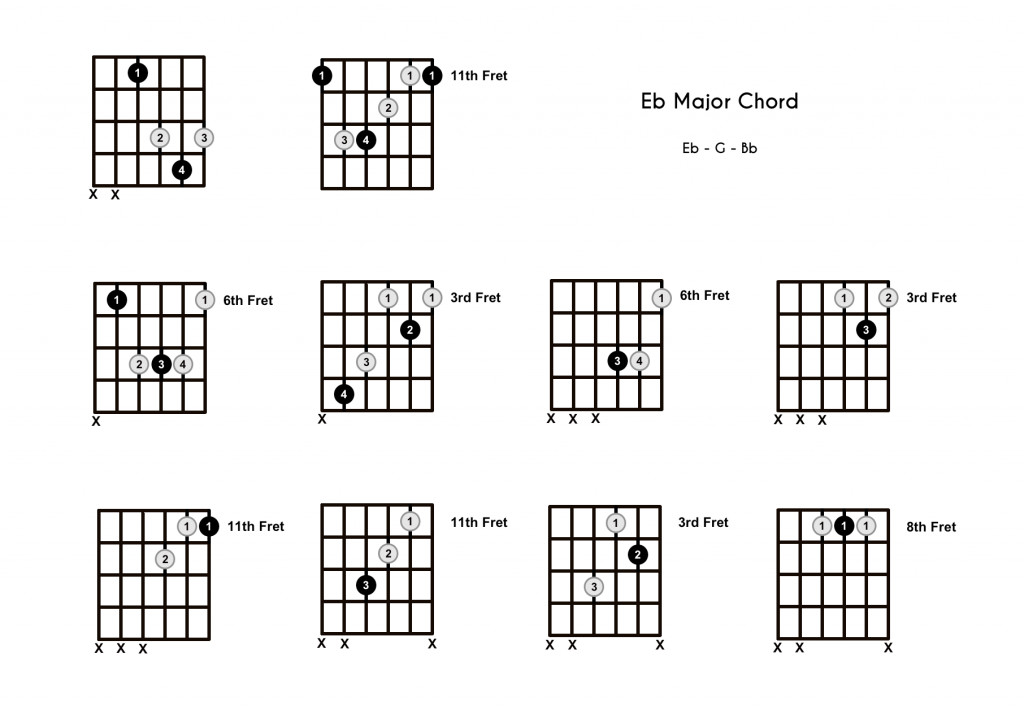 Eb Major Chord – 10 Shapes
Eb Major Chord – 10 Shapes
The Standard Eb Major Chord Shape
The most common Eb major chord shape is a barre chord variation, rooted on the 6th fret. It’s often described as a root-5 barre chord shape. Interestingly, the index finger might not always form a full barre in practice, primarily focusing on pressing down the root note on the 6th fret of the E string. This shape is widely used due to its strong, full sound and accessibility up the neck.
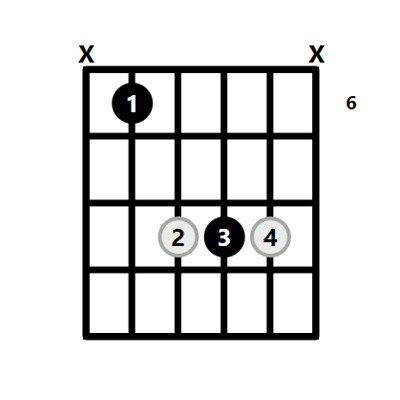 Eb Chord Guitar
Eb Chord Guitar
The Simplified Easy Eb Chord Shape
For beginners or situations requiring quick chord changes, the “easy” Eb chord shape is a fantastic alternative. This simplified version utilizes only the top three strings. It’s essentially the same fingering as an open D major chord, but shifted up one fret. This makes it a less physically demanding way to incorporate the Eb major sound into your playing, especially when barre chords feel challenging.
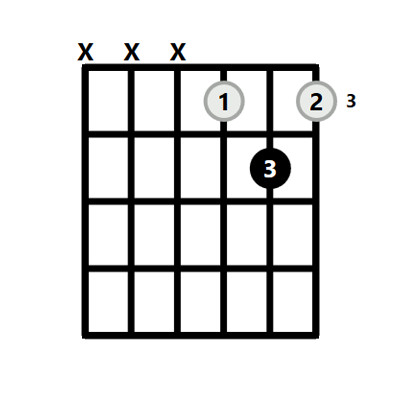 Easy Eb Chord Guitar
Easy Eb Chord Guitar
Step-by-Step Guide: Playing the Standard Eb Major Chord
Sometimes, visualizing a chord diagram isn’t enough. A step-by-step approach can solidify your technique and ensure you’re playing the standard Eb major chord shape correctly:
- Index Finger Placement: Position your index finger on the 6th fret of the 5th string (A string).
- Middle Finger Placement: Place your middle finger on the 8th fret of the 4th string (D string).
- Ring Finger Placement: Put your ring finger on the 8th fret of the 3rd string (G string).
- Pinky Finger Placement: Place your pinky finger on the 8th fret of the 2nd string (B string).
- Strumming: Strum the top five strings, avoiding the 6th string (low E string) for this particular voicing.
Walking through these steps methodically can be incredibly helpful, especially when you’re unsure if your hand positioning is accurate. It’s a great way to double-check your technique and build muscle memory for the standard Eb major chord.
Leveraging Barre Chords for E Flat Major
Barre chords are essential for any guitarist looking to play across the fretboard. The Eb major chord is readily playable as a barre chord in two main forms:
- Root 6 Barre Chord Shape: Utilize the E major barre chord shape, starting on the 11th fret.
- Root 5 Barre Chord Shape: Employ the A major barre chord shape, starting on the 6th fret (this corresponds to the “standard” Eb shape discussed earlier).
Barre chords provide a movable system for playing the Eb major chord (and many others) in different positions, expanding your fretboard fluency.
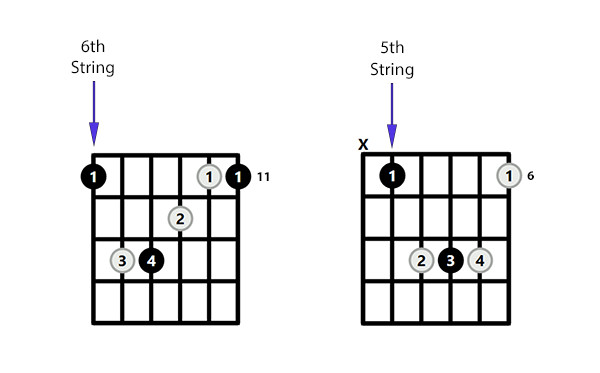 Eb Barre Chord Guitar
Eb Barre Chord Guitar
Exploring Eb Major Triads
Beyond full chord shapes, understanding triads unlocks new sonic textures and voicing possibilities. An Eb major triad consists of the same core notes: Eb, G, and Bb. However, triads can be played in different inversions, changing which note is the lowest. The three inversions of the Eb major triad are:
- Root Position: Eb – G – Bb (Root note is Eb)
- 1st Inversion: G – Bb – Eb (3rd of the chord, G, is the lowest note)
- 2nd Inversion: Bb – Eb – G (5th of the chord, Bb, is the lowest note)
Experimenting with these triad inversions adds sophistication and variety to your chord playing.
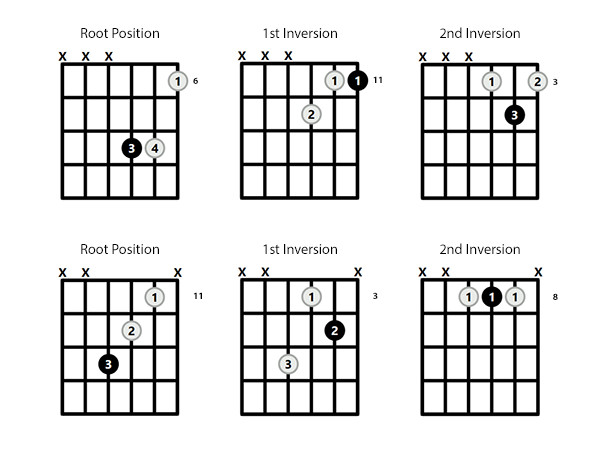 Eb Major Triad Guitar
Eb Major Triad Guitar
Keys Where the Eb Major Chord Resides
Understanding the harmonic context of the Eb major chord means knowing which musical keys naturally feature it. The Eb major chord is a diatonic chord (naturally occurring) in these keys:
- Eb Major: (Eb, Fm, Gm, Ab, Bb, Cm, Ddim) – As the tonic, Eb major is central here.
- Bb Major: (Bb, Cm, Dm, Eb, F, Gm, Adim) – Eb is the IV chord in Bb major, a subdominant chord.
- Ab Major: (Ab, Bbm, Cm, Db, Eb, Fm, Gdim) – Eb is the V chord in Ab major, the dominant chord.
- C minor: (Cm, Ddim, Eb, Fm, Gm, Ab, Bb) – Eb is the III chord in C minor, a major chord in a minor key (relative major).
- G minor: (Gm, Adim, Bb, Cm, Dm, Eb, F) – Eb is the VI chord in G minor.
- F minor: (Fm, Gdim, Ab, Bbm, Cm, Db, Eb) – Eb is the VII chord in F minor.
Recognizing these key relationships helps you understand how the Eb major chord functions within different musical contexts and facilitates smoother chord progressions and songwriting.
Alternative and Useful Eb Major Chord Shapes
While the standard shapes are essential, exploring alternative Eb major chord voicings can enrich your playing. These shapes might not be as common but offer unique sonic colors and fingerings, useful in specific musical situations or for personal preference.
Chord Substitutions for Eb Major
The Eb major chord, like many chords, has common substitutions that can add harmonic interest or simplify playing in certain contexts. Consider these substitutions:
- Eb sus4: Creates a suspended, unresolved sound, often resolving back to Eb major.
- Eb sus2: A brighter, more open sound than Eb major, also with a suspended quality.
- Eb add9: Adds a 9th interval, creating a richer, more complex major sound.
Conversely, in simpler arrangements, the Eb major chord can often act as a substitute for more complex Eb-based chords like Eb major 7, Eb7, and other extended chords (though not for minor chords).
Scales to Play Over the Eb Major Chord
For soloing, improvising, or melody writing over an Eb major chord, certain scales are particularly effective:
- Eb Major Scale: The most fundamental choice, naturally harmonizing with the chord.
- Eb Major Pentatonic Scale: A simplified major scale, excellent for melodic ideas and bluesy phrasing.
- Eb Lydian Mode: Adds a raised 4th, creating a brighter, more ethereal sound.
Experimenting with these scales over an Eb major chord backing track will expand your improvisational vocabulary and melodic creativity.
Further Exploration
 Get Guitar Chords Galore eBook
Get Guitar Chords Galore eBook
Mastering the Eb major guitar chord is a rewarding journey that unlocks a wealth of musical possibilities. By understanding its theory, exploring its various shapes, and practicing its application in different musical contexts, you’ll add a valuable tool to your guitar playing arsenal.
